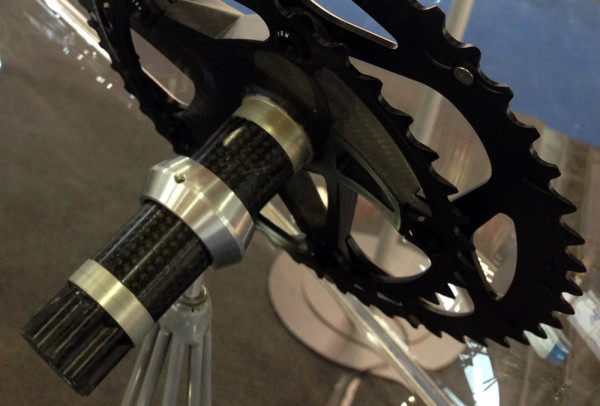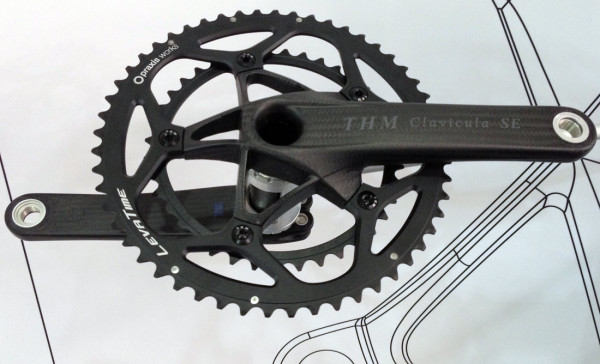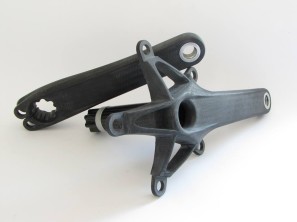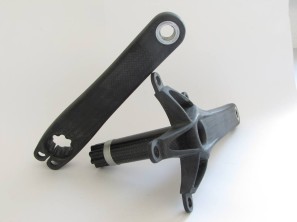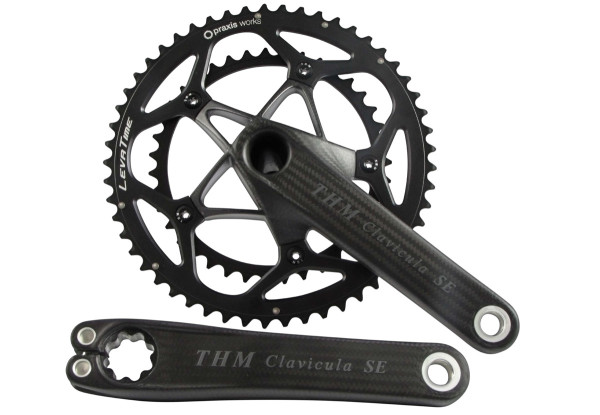THM debuted the newest iteration of their superlight carbon fiber crankset at Eurobike – the Clavicula Sine Exceptione, following on their latin naming this one sticks with the clavicle/collar bone name with a ‘without exception‘ subtitle. Certainly nothing was spared in this design either. The entire crank is made of carbon fiber with only the pedal inserts and clamping bolt being alloys. The big feature to note here is that carbon fiber spindle with THM’s standard spline interface molded in, and the new-in-carbon clamping surface on the lefthand crank arm. Read on to see how much weight they saved and where they are going next…
THM has refined the decade-old Clavicula design with a new geometrically optimized spider, placing more material in the structural load path to increase shift quality while dropping weight. They also seem pretty excited about the axle and non-drive crank arm attachment, as it is a first for a carbon-carbon interface in a crankset. In the end the same textures and carbon fiber composition of the two mating pieces actually reduced the movement between the two pieces, which results in more secure clamping, less wear over time, and no source for the development of creaking.
The two Clavicula SE samples on display at the show had molded in stainless steel bearing races, but we were told that during testing they realized that these weren’t necessary, and would be not exist on the production cranks in the spring. While a road standard 130 chainset was on display, the compact 110 will be first to market in the spring. No timeline for a mountain version was mentioned, but THM alluded to the fact that a MTB version was already in the works, and could certainly be expected to make it to market in the near future as well.
The German-made standard 130BCD crankset drops 60g off of the classic Clavicula to a staggering 360g including BSA bearings (that’s just 287g! with only the crankset itself.) With a set of Praxis chainrings it tops out at just 509g (and down to just 495g for the 110 compact setup.) The cranks will be available in 170, 172.5, and 175mm lengths with a q-factor of 148mm. Max rider weight is set at a conservative 120kg/265lbs, actually an increase from the previous version. Bottom bracket compatibility is claimed for BSA, Shimano Pressfit, BBRight, BB30, PF30, and 386 EVO.
Clavicula SE pricing is expected to be €1270, including the crankset, BSA bearings, a set of Praxis Works classic forged chainrings, and THM alloy chainring bolts. The 110BCD version will be available to customers in April 2015, with the 130BCD version a month later.
